Sign up for daily news updates from CleanTechnica on email. Or follow us on Google News!
As American electric vehicle fans, we are often envious of Europeans and Chinese. They have many more electric vehicle models to choose from, and their electric vehicle market share (of overall auto sales) is much higher. However, within the US, we do have one behemoth state that stands out above the crowd and can hold its own with Europe and China in terms of EV market share — or almost can in the case of China. That is California of course.
China has reached 26% of new car sales being full electrics (BEVs), and Europe is at 14% BEV share. California, meanwhile, has seen one out of five new car sales being full electrics in the first half of this year (21.4% market share). That market share is just slightly down from 2023 (when it ended at 21.5% market share), but the interesting thing there is that one major automaker is down a lot while several others are up.
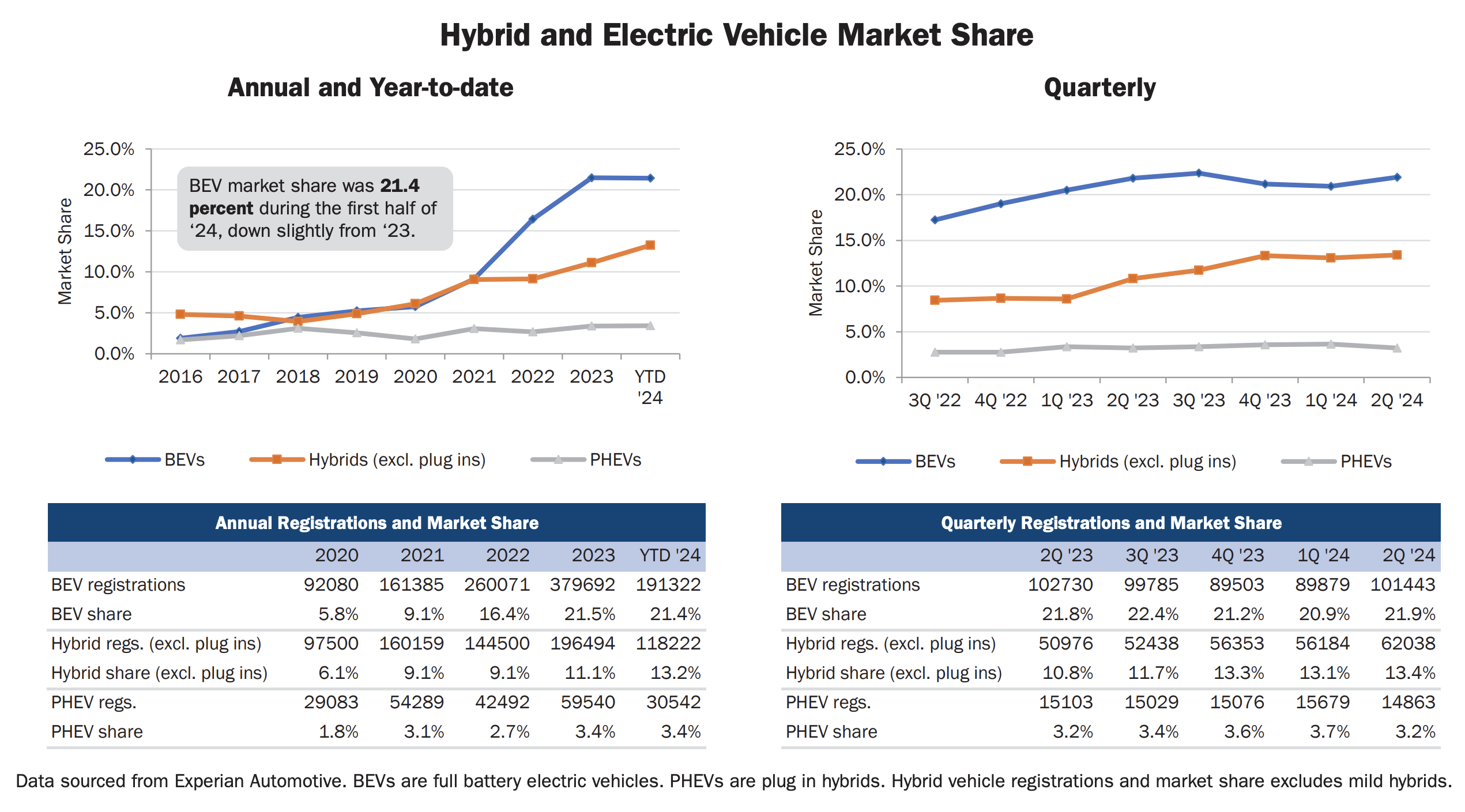

Plugin hybrid (PHEV) sales were stable at 3.4% in the first half of the year. Conventional hybrids, meanwhile, were up to 13.2%, compared to 11.1% in 2023. But we don’t have a lot of interest in hybrids here, so the rest of this article is only about BEVs.
As reported last night, the problem in the EV market is that Tesla sales in California were down 24% in the second quarter and down 17% in the first half of the year overall. Nonetheless, Tesla is still king of the hill.
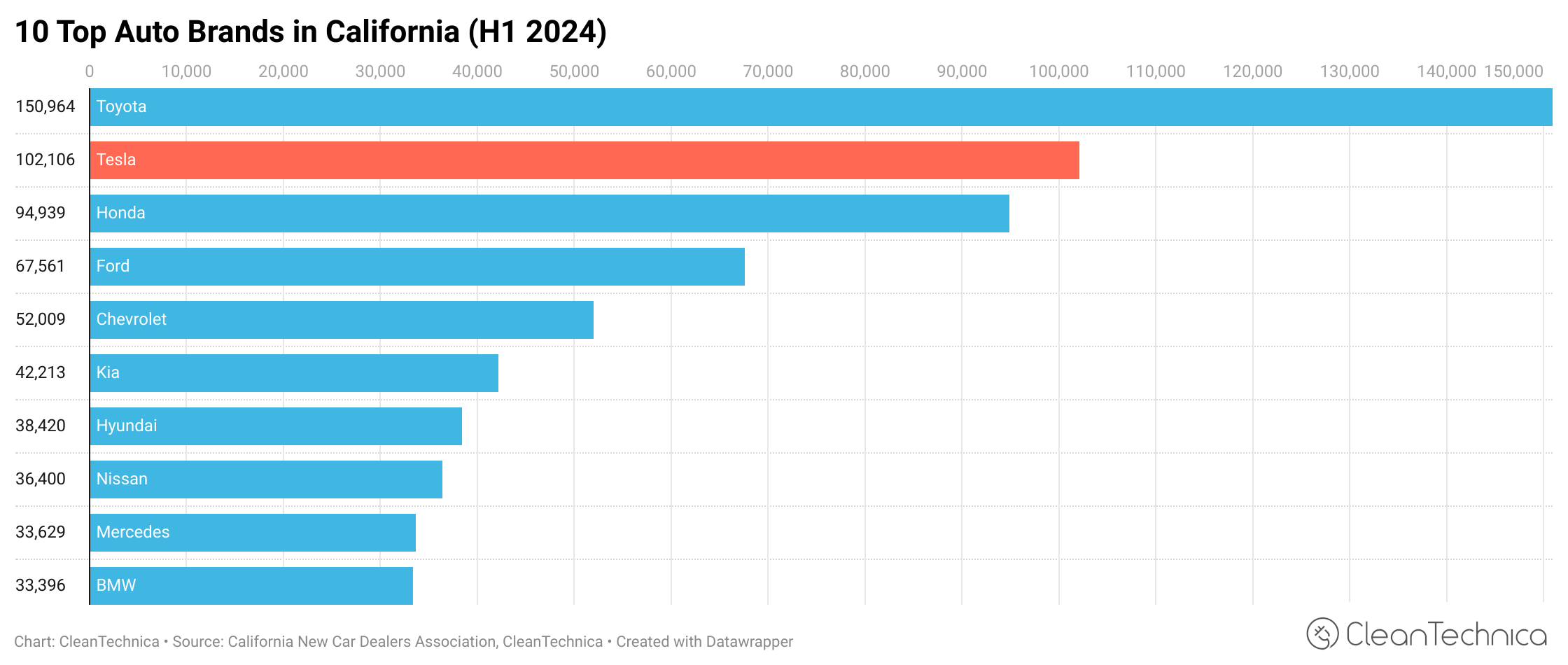

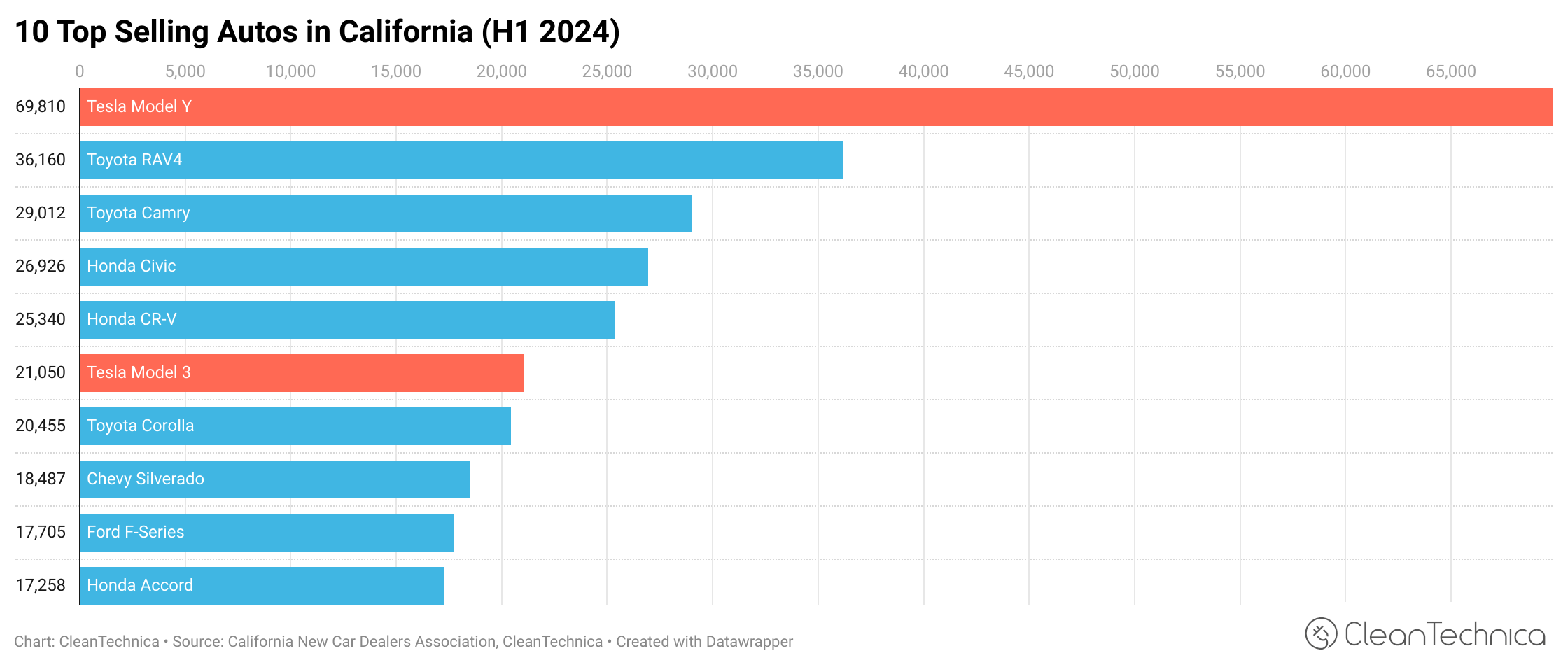

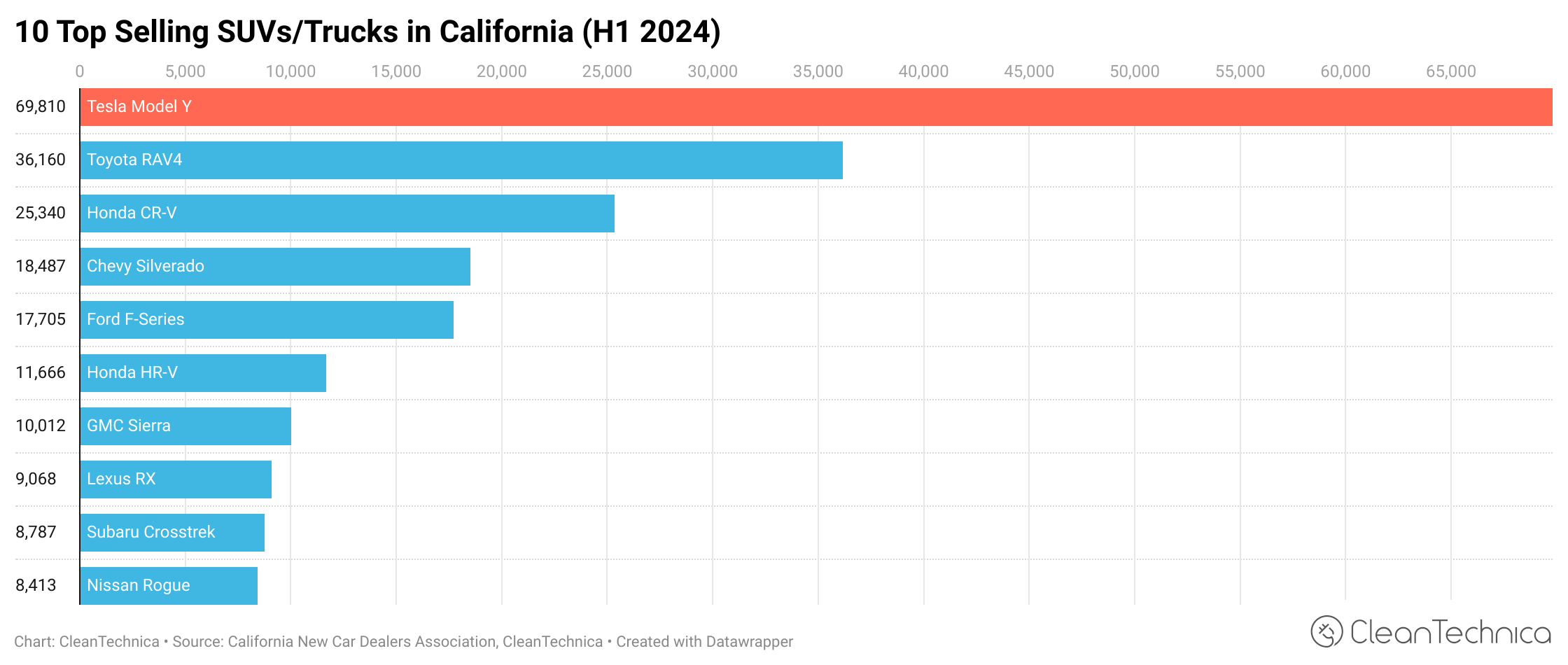

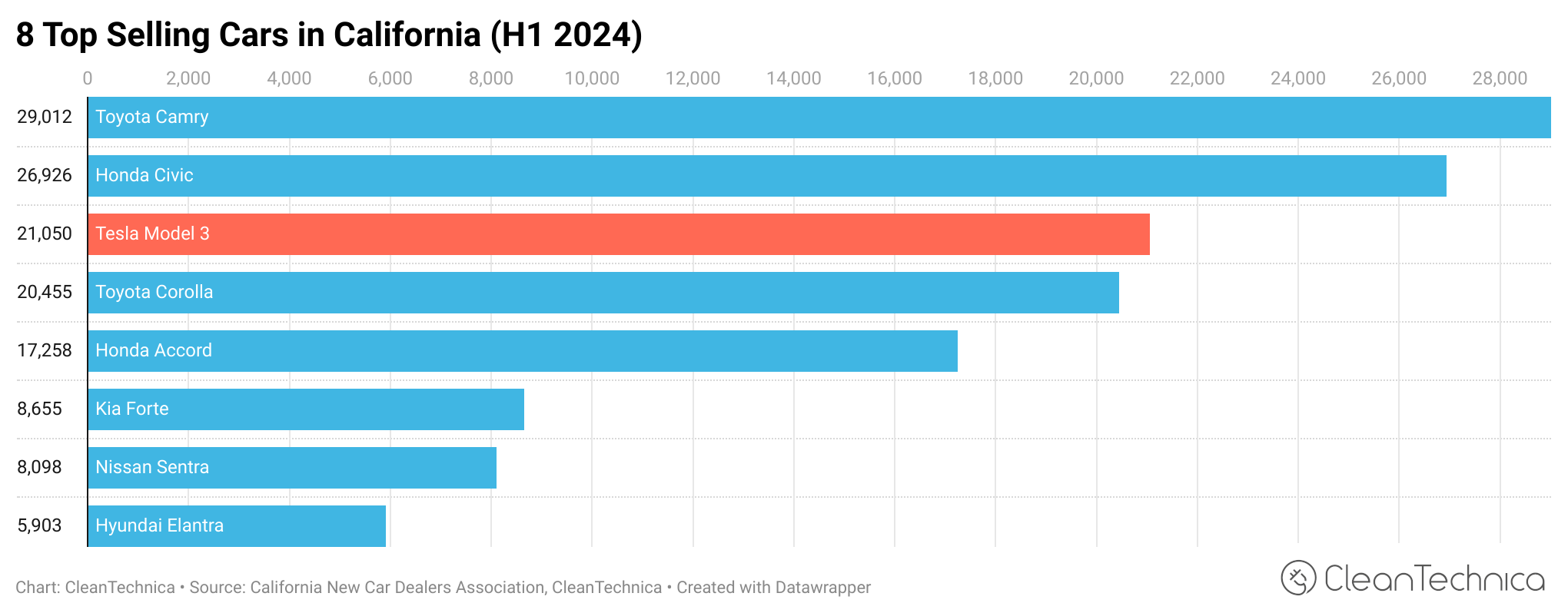

Tesla is actually the second best selling auto brand in the state! Three of its models top the sales charts for their vehicle classes in the first 6 months of the year. The Tesla Model Y, which is the best selling vehicle model across the whole market (by far), tops the “luxury compact SUV” class, of course. The Tesla Model 3, which is the 6th best selling vehicle overall, tops the “near luxury cars” class. And the Tesla Model S still tops the “luxury and high end sports cars” class (after all these years). The electric BMW i5 is actually second in that category, giving electrics first and second place. The Tesla Model X is close to the top in the “luxury midsize SUV” class, but is still a few thousand sales behind the Lexus RX.






Aside from Tesla topping those three vehicle classes, one more electric vehicle tops its class. That’s the Rivian R1S in the “luxury large SUV” class.


No other electric vehicles take first or second place in their categories, showing how much the California EV market is still based on Tesla — which has 53.4% BEV market share — but there are other models that make the top 5 in their vehicle classes. The BMW i4 is third in the “near luxury cars” category, the Ford Mustang Mach-E is third in the “2-row midsize SUV” category, the Audi Q4 e-tron is third in the “luxury subcompact SUV” category, the BMW iX is fifth in the “luxury midsize SUV” category, the Mercedes EQB is second in the “luxury subcompact SUV” category, and the Hyundai IONIQ 5 is fifth in the “compact SUV” category.








While Tesla is far and away the leader in the California BEV market, it’s clear these other models are picking up in pace and helping to mature the market. Naturally, with BEV market share being almost the exact same as in 2023 and Tesla’s sales/share taking a huge plunge, the former is only possible from other BEV models rising and filling the gaps. And that’s even more the case when you consider that the Chevy Bolt has been dropped from the market! One could also argue that it’s the growing competitiveness of other electric vehicles that has driven down Tesla’s sales and market share. There are more good options on the market than ever before, and, to some extent, that must take sales away from Tesla.
One more thing I have to say I’m very curious about: How high can Rivian rise in California? In particular, once Rivian is selling some more affordable vehicles, can it get up near the level of Tesla? I’m curious to find out.
Have a tip for CleanTechnica? Want to advertise? Want to suggest a guest for our CleanTech Talk podcast? Contact us here.
Latest CleanTechnica.TV Videos


CleanTechnica uses affiliate links. See our policy here.
CleanTechnica’s Comment Policy




